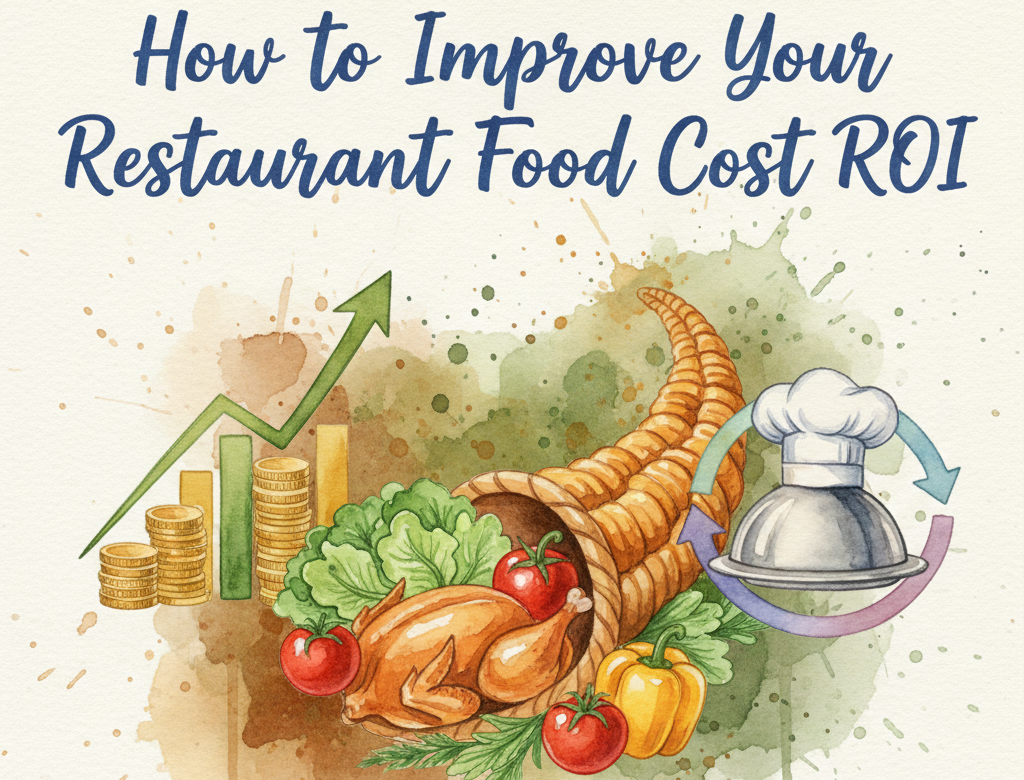Running a restaurant in Malaysia comes with many challenges, from managing staff to pleasing customers. But one of the biggest factors that can make or break your business is how well you manage your COGS (Cost of Goods Sold). COGS plays a critical role in determining your profitability and helps you keep track of where your money is going.
In this blog, we’ll break down what COGS is, why it’s important, and how you can control it in your restaurant. Whether you’re running a small cafe in Kuala Lumpur or a chain of restaurants across Penang, understanding your COGS can significantly improve your profit margins.
What is COGS?
COGS, or Cost of Goods Sold, is the total cost of the food and beverages you sell. It includes all the ingredients you use to prepare your dishes, such as meats, vegetables, spices, and even drinks. It also covers the cost of packaging, such as takeaway boxes and napkins.
For example, if you run a Nasi Lemak stall, your COGS would include the rice, coconut milk, sambal, fried anchovies, peanuts, and eggs you use to make the dish. The cost of these items is your COGS.
Why COGS Matters
COGS is important because it directly impacts your restaurant’s revenue and profitability. When you understand your COGS, you can see exactly how much you’re spending to produce the food you sell. The lower your COGS, the more profit you can make from each sale.
If your COGS is too high, you might find yourself working hard but not seeing much profit. If your COGS is too low, you might be cutting corners on quality, which could hurt your reputation and customer satisfaction. That’s why finding the right balance is key.
What Should COGS Be for a Restaurant?
In Malaysia, the ideal COGS for most restaurants is between 28% to 35% of your total sales. This means that for every RM100 you make in sales, you should aim to spend between RM28 to RM35 on ingredients and food production.
Here’s a breakdown of COGS based on different types of restaurants:
- Casual dining or fast food restaurants: These establishments often aim for lower COGS, around 25% to 30%. Since the ingredients are typically cheaper and dishes are simple, you can keep your costs down.
- Fine dining restaurants: For higher-end restaurants using premium ingredients, COGS can be higher, between 30% and 35%.
Keeping your COGS within these percentages ensures that you have enough revenue left to cover other expenses like rent, wages, and utilities while still making a profit.
What is a Good COGS?
A good COGS is well-balanced. It’s not just about spending as little as possible but about spending smartly. You want to use quality ingredients that keep your customers coming back, but you also want to keep costs low enough to ensure good profits.
For a typical restaurant in Malaysia, a good COGS is around 30%. This gives you the flexibility to use decent ingredients while maintaining a healthy profit margin. If your COGS is above 35%, you may need to revisit your food costs, supplier contracts, or portion sizes to bring it back down.
How to Calculate COGS for Your Restaurant
Calculating COGS is straightforward. Here’s a simple formula you can use:
COGS = (Beginning Inventory + Purchases) – Ending Inventory
Let’s say at the beginning of the month, you had RM10,000 worth of food in stock (beginning inventory). During the month, you bought an additional RM5,000 worth of food (purchases). By the end of the month, you had RM3,000 worth of food left (ending inventory).
Your COGS would be:
COGS = (RM10,000 + RM5,000) – RM3,000 = RM12,000
This means you spent RM12,000 on ingredients and food production during the month. If your total sales for the month were RM40,000, your COGS would be:
COGS percentage = (RM12,000 / RM40,000) x 100 = 30%
This falls within the ideal range for most restaurants in Malaysia.
COGS Pricing Strategy
Once you know your COGS, you can use this information to set your prices and ensure that each dish brings in a profit. Here’s a simple COGS pricing strategy you can follow:
- Mark up your dishes 3 to 4 times their COGS: For example, if a dish costs you RM5 to make, you should price it between RM15 and RM20. This ensures that your price covers the cost of ingredients, plus other expenses like rent and labor while leaving room for profit.
- Use psychological pricing: Pricing a dish at RM19.90 instead of RM20 can make it more appealing to customers. It’s a small difference, but it can increase sales.
- Review your menu regularly: Every few months, review your menu to ensure that your prices are still covering your COGS and that you’re not losing money on any items.
- Bundle items for better margins: Offer combo meals or set menus that include high-margin items like drinks or desserts. This can increase your average order value without drastically increasing your COGS.
Keeping Track of Your COGS
Monitoring your COGS regularly is essential for maintaining a profitable restaurant. Ideally, you should review your COGS every month. If you notice that your COGS is creeping up, here are a few areas to investigate:
- Rising ingredient costs: Prices for certain ingredients, like seafood or imported items, can fluctuate. Consider switching suppliers or substituting more affordable alternatives if prices increase.
- Portion sizes: If portions are too large, you may be wasting food and driving up your COGS. Check to ensure that portion sizes are consistent and appropriate.
- Food waste: Keep an eye on food waste in the kitchen. Are ingredients being over-ordered or not used before they spoil? Reducing waste is a quick way to lower your COGS.
Tools to Help You Manage COGS
Technology can make it easier to manage your COGS and keep track of your costs. Many restaurants in Malaysia now use Point of Sale (POS) systems that offer features like:
- Inventory tracking: A good POS system can track your inventory in real-time, so you always know how much stock you have and when to reorder.
- Recipe costing: This feature helps you calculate the exact cost of each dish, ensuring that you’re pricing your menu items correctly.
- Sales reporting: POS systems provide detailed reports showing which items are selling well and which are not, helping you make informed decisions about your menu.
According to a survey by Fave Malaysia, nearly 70% of restaurants that use POS systems saw an improvement in managing inventory and reducing waste. This technology helps you streamline your operations and focus on growing your business.
The Impact of COGS on Restaurant Revenue
COGS plays a huge role in determining your overall restaurant revenue. If your COGS is too high, your profit margins shrink, and covering other expenses like rent, salaries, and marketing becomes harder.
For example, if your restaurant’s revenue is RM50,000 per month, but your COGS is 40%, you’re spending RM20,000 on food costs. This leaves you with only RM30,000 to cover everything else, which can quickly get eaten up by other expenses.
On the other hand, if you can keep your COGS at 30%, you’ll spend RM15,000 on food, leaving RM35,000 to cover other costs and boost your profits.
Understanding and managing your COGS is one of the most important steps to running a profitable restaurant. By keeping your COGS in check, using a smart pricing strategy, and regularly reviewing your expenses, you can ensure that your business remains competitive and profitable in the Malaysian market.
Keep track of your COGS monthly, use technology to your advantage, and always look for ways to improve efficiency. Small changes can lead to big results in your restaurant’s bottom line. If your COGS is creeping above 35%, it’s time to take action and find ways to bring it back down.




